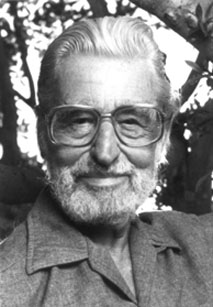Artwork
Seuss evidently enjoyed drawing architecturally elaborate objects. His endlessly varied (but never rectilinear) palaces, ramps, platforms, and free-standing stairways are among his most evocative creations. Seuss also drew elaborate imaginary machines, of which the Audio-Telly-O-Tally-O-Count, from Dr. Seuss's Sleep Book, is one example. Seuss also liked drawing outlandish arrangements of feathers or fur, for example, the 500th hat of Bartholomew Cubbins, the tail of Gertrude McFuzz, and the pet for girls who like to brush and comb, in One Fish Two Fish.
Seuss's images often convey motion vividly. He was fond of a sort of "voilą" gesture, in which the hand flips outward, spreading the fingers slightly backward with the thumb up; this is done by Ish, for instance, in One Fish Two Fish when he creates fish (who perform the gesture themselves with their fins), in the introduction of the various acts of If I Ran the Circus, and in the introduction of the Little Cats in The Cat in the Hat Comes Back. He was also fond of drawing hands with interlocked fingers, which looked as though the character was twiddling their thumbs.
Seuss also follows the cartoon tradition of showing motion with lines, for instance in the sweeping lines that accompany Sneelock's final dive in If I Ran the Circus. Cartoonist's lines are also used to illustrate the action of the senses (sight, smell, and hearing) in The Big Brag and even of thought, as in the moment when the Grinch conceives his awful idea.





 Reply With Quote
Reply With Quote